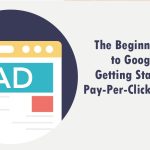Social media has significantly impacted traditional advertising, which is no secret. Due to streaming services and mobile device usage, many businesses have changed their marketing strategies to keep up with the rapidly changing environment.
Customers need to figure out whom to trust due to the market’s numerous product selections and rising attention demand. It is challenging for businesses to keep up with the digital landscape because of their onerous restrictions on advertising.
Customers also tend to trust word-of-mouth marketing from their relatives and friends over brand-specific advertising. Therefore, influencer marketing will become the most popular and promising form of advertising.
The role of influencer marketing is much more significant than it appears. Many live business examples have applied it and gained excellent results. Hence, if you are also looking for a guide to using influencer marketing in your business, read the following article until the end.
You will learn some helpful information about influencer marketing from this article and how to create an efficient marketing plan for your company. If you are a beginner in the following context, this article will be the best way to learn everything from scratch.
What is Influencer Marketing?
A type of social media marketing is influencer marketing. It consists of endorsements and promotions for goods and services by figures, groups, and organizations with a high social consciousness.
To reach your and their target audiences with brand messages, you must engage in influencer marketing, which is marketing to, with, and via influencers.
While influencer marketing doesn’t only rely on particular recommendations, it is akin to word-of-mouth advertising.
Influencers can originate from a variety of sources. Any person, team, organization, place, or thing can have an influence.
These content makers often have engaged audiences who follow them. Your business can use buyer personas to advertise to them on various social media platforms to broaden its reach, raise brand recognition, and produce new leads for your sales funnel.
Influencer marketing can be used as a stand-alone technique or to enhance your other marketing initiatives.
Who is an Influencer?
A person or entity with the power to affect how others behave or think: An influencer is a person who has a considerable or authoritative impact on a purchase choice.
Influencers on social media are those who have organically and faithfully grown their following over time. Only social media influencers with highly active followings on their social networks should be used by marketers.
Although this marketing influencer may have a sizable fan base, you must ensure that it engages with its content, or it could be a complete failure.
Marketing professionals must routinely contact social media influencers as part of their influencer marketing plan. Your visibility and engagement with potential brand influencers increase the more regularly you do this.
Why is Influencer Marketing Important?
Since most opinion leaders draw their followers from social media platforms, influencer marketing and social media marketing are closely intertwined. Since that social networks are used by half of the world’s population, this channel allows you access to a sizable audience.
Even better, influencer marketing gives you access to audiences that conventional advertising cannot reach. Although two-thirds of customers use ad blockers, the same people voluntarily follow influencer recommendations. 80% of consumers have purchased after hearing about it from an influencer.
Influencer marketing has been proven beneficial by brands that already use it. Understandably, 17% of businesses spend more than half their marketing budget on influencers.
So, in the era of social media and ad fatigue, influencer marketing is essential. This marketing channel generates outstanding outcomes and aids in brand trust-building. Let’s now discuss the other advantages that influencer marketing offers.
1. Precise targeting
Any marketing strategy must include identifying and directing its efforts toward the appropriate audience. But, it is frequently a complicated procedure and necessitates thoroughly comprehending your target customers.
Before choosing any influencer for your brand, check whether the influencer matches your brand. Their niche and audience interaction should be accurate and matching to your brand.
For instance, if you are a clothing brand and your target audience is millennials. Then you have to sell them your product a bit inexpensive, which also should be stylish.
Hence with the help of bloggers, influencers, and fashion models. There’s a high possibility that you will be able to reach your target audience.
2. Enhanced brand awareness
With the help of influencers, you can increase your brand’s awareness. This also gives the brand greater exposure with all its enormous reach.
By collaborating with influencers, you may break through the clutter and attract their fans to your company. It helps create meaningful online dialogues about your brand and gives it more online visibility.
3. Boosted audience engagement
Increasing the number of comments and like on your social media posts is challenging. Having millions of followers will only do something if there is active involvement. This is a situation when using influencer marketing makes sense.
First, working with influencers improves the quality and user-centricity of your content. Such material has a higher chance of gaining momentum among your target market.
The second benefit is that once an influencer promotes your content on their social media pages, their followers will also interact with it. If they adore the range, they might post it on their account, tag their friends, and broaden their audience.
4. Improved conversion rates
Any business’s main objective is to increase sales and profit. But, it is challenging to draw in new customers by bragging about yourself.
Consumers are increasingly wary of these firms and frequently spend hours online researching them before purchasing.
Influencers can help you gain more customers, bringing more service to your business. Customers believe their favourite customer for such advice.
Brands can use it to sway consumer choices and boost conversion rates. According to a study, 33% of participants thought influencers were the most trustworthy sources for purchase advice.
Influencer marketing is undoubtedly a powerful strategy for attracting new clients. It aids in expanding your customer base and ultimately raising your revenue.
5. Increased trust and credibility
The trust of their followers gives influencers great power. This means you will generate a devoted fan base as a token of this trust.
An influencer’s honest review of your goods or services is an authentic endorsement. This enhances your brand’s credibility and gives a brand value in the market.
Working with influencers means you have a representative of a brand. The influencer is close to their audience, and they have a better relationship with them. Which is why the general audience likes and listens to them.
Therefore if you choose a legitimate influencer who is good with their audience and their audience also trusts them. This will help you increase your brand’s legitimacy if it is connected to them, which will also help you gain higher income.
Benefits of Influencer Marketing
1. Brand awareness growth
If you look at today’s market state, you will see around 40 per cent of marketers. Who use influencer marketing to increase their brand awareness. Which is an intelligent and excellent tactic for marketing in recent times.
Opinion leaders inform their followers of your brand’s history, purpose, and guiding principles. This increases your website’s outreach and establishes your business’s market presence. This can help a business automatically increase its outreach.
2. Content strategy enrichment
A fantastic option to spice up your social media posts is influencer marketing. You can republish the influencer’s material or, like 24% of brands, encourage their followers to make user-generated content.
Images from bloggers can also be used for other marketing strategies, such as specialised advertising, including the copyright clause in the contract to prevent any issues.
3. Quality lead generation
It may work if you want to generate more excellent leads through influencer marketing. As per statics, influencer marketing can generate around 36% of brand leads. There is 72 percent of businesses agree that this method works.
Businesses choose influencers of their liking who they think can grow their business better. Even better, some content, like reviews, draws warmer prospects in the middle of the sales funnel.
4. Cost-effectiveness
Some marketing avenues demand regular infusions of funds from your budget. One should top-up their account for advertising purposes if they want to promote their brand through search engine marketing. If not, your advertisement gets removed from the results page of search engines.
A well-planned influencer marketing approach might help you get better outcomes for less money or open the door to future bartering. That is why one should set a budget for this campaign and work accordingly.
Influencer marketing can benefit your company by boosting lead generation, brand awareness, and online presence. You have full liberty to choose an influencer that you think suits your business best.
Types of Influencer Marketing
Since the advent of influencer marketing, companies and influencers have launched various initiatives. Let us look at some popular strategies you can use for your influencer marketing plan.
We looked at five popular forms of influencer marketing. There are a lot more of them since influencers and businesses can do anything when they work together. Nevertheless, using influencer marketing for your business only requires a straightforward algorithm. We’ll tell you more about it later.
1. Social media takeover
This sort of influence marketing is used to increase the number of followers on specific social media platforms. But to hand over your brand value and image to an influencer’s hand is a bold move.
Most of the time, a business gives an influencer a day to run their profile. Another choice is to ask a prominent figure to moderate a stream like Miele did in the instance below. To host a series of online culinary sessions, they invited chefs Kyle Connaughton, Helena Rizzo, Gaggan Anand, and Paco Roncero.
2. Affiliate marketing
A simple and somewhat inexpensive method of generating leads is through affiliate marketing. This approach entails compensating an influencer for each client that arrives via their website or social media profile. You can establish an affiliate programme on your website and wait rather than wasting time looking for influencers and haggling.
Here is an illustration of affiliate marketing from Brian Kelly’s The points guy blog. Brian provides strategies for lowering travel expenses utilising credit, travel, and hotel cards in the blog’s section devoted to doing so. The blogger includes partner offers in addition to reviews, and each purchase awards points and perks.
3. Sponsored content
Sponsored content is pervasive on social media. Influencers are compensated whenever a brand posts any promotional message on their accounts. And these influencers handle content development and post prepared content per the client’s instructions.
For instance, if you have a shoe business and are on your path to making it a brand. You can choose an influencer you are passionate about creating content on their social media page. Check their followers, as the influencer you choose should have considerable audience interaction. With more followers, it will reach a more significant number of people.
Once you decide to collaborate with the influencer, they can showcase your brand using them, creating a post about them. This all will be in the form of brand endorsement. Technically they are distributing all this content to their audience that will reach their audience, which will increase your brand value.
4. Unboxings
Influencers frequently receive gifts from brands hoping that popular social media users would open and review them. Compared to the prices influencers demand advertising, it is inexpensive. Yet, this tactic carries many risks.
The opinion leader might need to review your product to start with. Another argument is that the influencer’s unfavourable comments frequently endanger brands. Companies sometimes also try to be bloggers packing orders, and there is a high possibility it can engender criticism. So, it is better to avoid these possibilities before using this strategy.
The cosmetics company Too Faced has dazzled influencers with stunning gifs for years. As an illustration, consider YouTuber AleLaChula, who received the whole line of Too Faced items for free. The influencer made an unboxing video of the present because it was excellent and received 45 thousand of views.
5. Brand ambassador programs
There are influencers or people who are willing to promote some businesses in collaboration with any fees. Sometimes it’s because they are passionate about their work, and sometimes because your company has excellent potential and brand value.
Businesses offer influencers the position of brand ambassador because of the same reason. Therefore, such passionate influencers could be the leader and show enthusiasm for the brand’s endorsement.
Influencer Marketing Strategy
Now this time, learn what approach you can use to grow your business with the help of influencer marketing, which is why you need to make your influencer marketing strategy as per the requirement of your business.
This section includes some basic steps you can consider following, which every business will adapt for influencer marketing. So follow the step-by-step instruction manual we have created for you to get things started.
1. Select your target audience.
Your first step in influencer marketing strategy is to identify your target market. There are multiple ways to deduce your potential clients. Your objective is to turn your viewers or audience into potential clients, correct? To better understand your audience’s preferences, you must poll your customers.
With the aid of the influencers you work with, you may do it through your social media platforms. Keep an eye out for the values your clients seek, how they select your products, what they like to purchase most, Etc.
If you want to draw in new viewers, you must start over. By answering the following questions about your audience, you can start your journey:
- Decide which audience you are targeting. You should be clear about what age group, social standing, level of income, and all other characteristics.
- Decide what stage of the marketing funnel your audience is in. Many marketing tools, like Ben Hunt’s customer awareness ladder, are available.
- What do they find interesting? You can search for online forums and media, look through social media accounts, analyse information on the platforms that your prospects prefer to locate them, and more to spot them.
- What actions do they take? See the studies that major brands and agencies release. Choose articles about influencer marketing, media consumption, or social media.
Please put this information into client profiles to access it whenever needed. Create a buyer persona by using our detailed instructions.
Social media is used by 43% of individuals to investigate products before making a purchase. Use this by using the jobs-to-be-done method. Describe the reasons individuals look for your items and the circumstances in which they use them. It will enable you to speak with your influencer about their demands.
2. Set goals and KPIs
Influencer marketing can be utilised to achieve various objectives, just like any other advertising campaign. You have to formulate your goals clearly because it will determine the mechanics you use.
Set key performance indicators since these will assist you in determining whether or not you obtained the required results. Examples of KPIs for brand awareness efforts are provided below:
- Entire reach
- Total involvement
- Website Traffic
- Search interest
- Media Mentions
Make them your signpost if the goal of your influencer marketing strategy is to drive sales or particular user behaviours. The KPIs, in this instance, are the number of transactions, registrations, app downloads, email signups, and other actions.
3. Find the right channel
Marketers say specific social media sites may be more or less useful for influencer marketing. Instagram will only sometimes be the most fantastic choice for you, however. Choose a platform based mainly on the interests of your audience, your company’s objectives, and the chances each channel offers.
For instance, LinkedIn may be more advantageous for B2B companies. This platform gathers six hundred thirty million professionals and 90 million senior-level influencers.
Consider the statistics mentioned earlier with a grain of salt. Testing is ultimately the only method to help you identify the ideal channel. Choose a few platforms where your target audience may be and launch cost-effective advertising on each to help you decide which is perfect.
4. Determine your campaign budget.
The amount of campaign outreach depends on the funding you set aside. Therefore this phase is crucial. Influencers determine prices based on factors like the number of followers they have, market rates, the interests of the advertisers, Etc. You might spend thousands of dollars on a post on an account with 1 million followers.
Opinion leaders with fewer fan bases might be better if money is short. They can he;p you in achieving your goals with less money invested. Before investing, anyone can check influencer marketing; try mini and micro-influencers with your brand.
A tight budget will only let you run an influencer marketing campaign with help and obtain all the outcomes you want. Hence, when you start, update your goals and KPIs following the resources you have.
5. Pick the right influencers
If you choose the incorrect influencer, all the work done in the preceding steps fails. Choose an opinion leader who shares your brand’s values for the ideal match. Promoting a sustainable fashion line should be done through something other than shopaholic bloggers. Choose influencers who promote concepts like awareness, minimalism, and zero waste.
The possibility of fraud and phoney followers is another issue with influencer marketing. Properly review the influencer’s account to lessen your chances of getting duped.
- Check the influencer’s subscriber list for the number of bots or phoney subscribers. Use specialised tools, such as trendHERO, to measure this.
- Ensure that fans are updated on the influencer’s progress. The profile owner can provide account information on the engagement rate upon request.
- Double-check for duplicate accounts, and double-check for the same if there are any repeated names and contact.
- Make sure the influencer’s followers are devoted. Some bloggers attract more detractors than supporters. Promoting won’t do anything; this won’t grow your sales or subscribers, so you must also read the comments.
- Selecting the ideal influencer requires strenuous work. If you have a small number of opinion leaders to choose from, you can do it manually. Use sites like Markerly or Klear to research and verify influencers.
6. Set up the campaign
A typical influencer’s job is to create content. Yet, if you want to succeed, you must be clear about your expectations and objectives for the campaign. The best action is to create a campaign brief covering the abovementioned elements.
- Establish the platform and the profile. Numerous influencers have multiple accounts on different channels.
- The objectives of the campaign. Provide the opinion leader-specific CTAs.
- List the key messages. Include at most four things the influencer should mention about your product on your roster.
The last piece of advice is to draught a blogging agreement. The paper should specify precise campaign specifics, participant responsibilities, content ownership rules, deadlines, desired results, and guarantees.
Be specific about each point you make, including any that you think are crucial or contentious. Urge bloggers to conduct themselves following FTC regulations, which are federal laws that forbid unfair or deceptive advertising.
The Role of Influencer Marketing and Their Impact on Digital Marketing
1. Change in Marketing Spend
The change in marketing expenditure for many businesses is one of the essential effects of influencer marketing in recent years. The money previously set aside for paid or print advertising has been transferred to digital promotions.
By 2023, somebody will anticipate that B2B enterprises will boost their public programs by 89% for goods and 58% for services. An ROI is 11 times greater than traditional marketing expenditures. It was found in a Nielsen Catalina Solutions case study on the efficiency of B2B influencer marketing.
These figures serve as a powerful reminder of how beneficial this possibility is for B2B companies that are still debating if it makes sense to collaborate with influencers.
2. Relinquishing Creative Control
Traditionally, companies would manage the creative process internally or contract with an outside agency when creating a digital marketing plan. Influencer marketing still uses these strategies, but more creative control over the final output must be exercised.
Digital influencers are popular because of their genuineness and other aspects of their brands. Their audience is not interested in watching something overly produced or contrived. Instead of creating a polished campaign touting the advantages of one social media scheduler over another, an influencer may post about Instagram schedulers and emphasize the essential elements in a quick social media video while they’re sipping coffee in their workplace.
Due to the influencer’s loss of creative control, the brand elements of the promoted good or service will take precedence. Success depends on finding an influencer who is compatible with the brand and on having a clear understanding of the rules.
3. Better Audience Alignment
The requirement for audience alignment is yet another factor in the significance of choosing the proper influencer. Digital influencer is aware of their audience’s content preferences and user behaviour. An influencer is a translator or middleman for brands, bridging the gap between your business and your target market.
People feel less like they are being sold to when an influencer shares information with them and more like they are getting advice from a friend.
Finding the ideal influencers will take much work for B2B businesses looking to align their audiences. It’s crucial to look for industry experts and influencers with followers of people who would use your product or service.
4. Accelerated Sales Funnel Progression
A quicker sales funnel process is one of the critical advantages of an influencer’s position in digital marketing. Working with an influencer could help your leads move quickly from the brand awareness stage to the decision stage.
The underlying trust and engagement between the influencer and their audience have caused this rapid rise. Their followers will believe the influencer’s advice if they have established a sincere bond with them.
Finding an influencer who has nurtured a trusted relationship with their audience is one thing to keep in mind. There is cause for concern if an influencer agrees to endorse a good or service without seeing a demo or using your offering.
5. Demand for Accountability
Influencers know that by spreading inaccurate or misleading information about a product or service to their audience, they put their reputations at risk. Influencers risk losing followers, credibility, and paid chances if they promote products or services they have yet to evaluate thoroughly.
As a result, the recruiting company receives this requirement for accountability. Before the influencer agrees to share your service with their audience, prepare to demonstrate its value to them. For instance, if you sell a small company accounting tool, ready to provide the influencer free access for a while, along with proactive customer care, before they consent to a sponsorship.
6. Changing Legislation Around Transparency
Changes in the law governing openness and authenticity in advertising have become necessary due to the rise of influencer marketing. Although much has changed since the internet became commonplace, several legal ambiguities still need to be resolved.
Influencer marketing transparency is one of the most recent modifications to Internet regulations. The FTC ruled that influencer relationships and sponsored posts must be declared within paid content in 2017. As a result, both influencers require compliance and the hiring party risk facing harsh financial penalties.
Usually, it suffices to link to a paid partner and use the hashtag #commercial at the opening of the material. When working with an influencer, it’s crucial to comprehend the FTC’s regulations’ subtleties and ensure they’re followed. Whenever a respected business figure recommends your SaaS product, they should disclose whether they were compensated or received affiliate income for their work.
7. Shift Away from Celebrity Endorsements
Celebrity endorsements have always been one of the mainstays of consumer advertising for B2B and B2C marketing initiatives. One of the fundamentals of advertising that one learns in school. Influencer marketing began as the contemporary equivalent of a celebrity endorsement. But, in recent years, businesses have started to turn instead to micro and nano influencers.
Nano-influencers have fewer than 10,000 followers, whereas micro-influencers are broadly characterised as having fewer than 100,000. The advantages of collaborating with lesser influencers are manifold. Smaller audiences tend to have better engagement rates, producing warmer leads during sponsorship campaigns. Smaller influencers also frequently have lower partnership rates.
Businesses collaborating with tiny B2B influencers frequently see higher conversion rates despite having a smaller reach.
Conclusion
Influencer marketing is crucial for building brand awareness and customer confidence in your organisation. Every customer wants to purchase a good or service from a recognised retailer. So, leveraging influencer marketing for your business is crucial.
Over the past ten years, influencer marketing has transformed the field of digital marketing. The time is now to take advantage of this opportunity if your company still needs to.
Start with clearly defined process-related goals for any successful firm. Define your speciality and decide what you want to achieve, such as increased brand recognition, client loyalty, conversion rates, Etc.
After that, dependable research influencers that will appeal to your audience, choosing a well-known figure or an industry leader. See your relationship with an influencer as a collaboration, and cooperate to engage your expected audience.
In the end, after reading the following article, you gained all the knowledge you need related to the role of influencer marketing in digital marketing and businesses.









